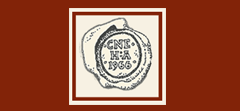Abstract
Throughout the twenty-year history of professional archaeological excavations at George Washington's Mount Vernon, a single refuse feature represents the only deposit unearthed that can speak to the material manifestations of changes in the Washington households within a pre-Revolutionary War context. With the discovery of the large, oval-shaped feature that came to be known as the South Grove Midden (44FX762/17), Mount Vernon archaeologists realized they had uncovered a stratified deposit that could link the successive Washington households with their material culture. This paper asks: whose trash is it, anyway? To answer this question, I employ the methodology of increasingly specific seriation analyses on groupings of ceramics to view stratigraphic variations in ceramic use and discard. The interpretive framework of household archaeology unites the archaeological record with the historical context of household cycles at pre-1775 Mount Vernon. This paper concludes that the bulk of the midden represents those household goods purchased by Lawrence Washington, and used and discarded by his and young George Washington's households.
DOI
10.22191/neha/vol33/iss1/11
Recommended Citation
Breen, Eleanor E.
(2004)
"Whose Trash is it, Anyway? A Stratigraphic and CeramicAnalysis of the South Grove Midden (44FX762/17), MountVernon, Virginia,"
Northeast Historical Archaeology:
Vol.
33
33, Article 11.
https://doi.org/10.22191/neha/vol33/iss1/11
Available at:
https://orb.binghamton.edu/neha/vol33/iss1/11


